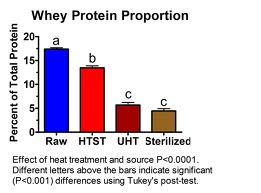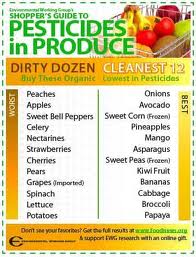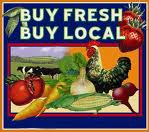Ever wonder what the difference is in the milk in the store?
What’s the difference between the brands? and why different prices?
It is much cheaper to move milk around if you take all the water out!
You take the water out, you take out the water-soluble components in the milk. 
Many processors “reconstitute” the milk and then ship it to the store. Except for two producers here in california, all milk is pasteurized. Because the pasteurization process can damage the components of milk, much of that is added back via a chemical additive. Not always the same thing as the “cow” put out.
Think sweetener: sugar, saccharin, stevia, glucose, HFCS (high fructose corn syrup)… all called sweeteners but all very different. So when they “add” Vitamin D to the milk, is it in the same form that the cow produced, that our bodies can absorb?
 The “cheaper brands” take the milk apart and then try to reassemble it as inexpensively as possible, to keep that price low.
The “cheaper brands” take the milk apart and then try to reassemble it as inexpensively as possible, to keep that price low.
I know if you make cheese from commercial milk, you have to add calcium back into the milk! ultra pasteurized milk can NOT even be used to make cheese.
Ultra-Pasteurized WARNING!
I’m finding that it is almost impossible to find milk that has NOT been ultra pasteurized (even those called organic).
We have another name for ultra pasteurized milk.
It’s called:
“white water that lives on the shelf
long time!”
It is “cooked” at very, very high heat which alters the milk, and allows it to not go bad on the shelf, for weeks.
Think of the difference between a raw egg, and an overcooked scrambled egg. They are NOT the same product, even though they had the same beginning and both can be called ‘an egg’. Heat can dramatically alter the product.
Organic milk, that is ultra pasteurized, is stripped of the very properties that made it a good buy. I talked with some dairy farmers who provide this organic milk and asked why this was done. They said that they had NO CONTROL despite being a farmer co-operative. The buyer’s of their milk (processor) did it to make the milk last longer.
 Lucky, so far, some local dairy operations, CLOVER & Strauss do NOT ultra pasteurize their milk. If you want to support local dairy operations here in Northern California, these are two great ones. In fact, Strauss (the glass bottles) does a very low heat, slow process that preserves the components in the milk.
Lucky, so far, some local dairy operations, CLOVER & Strauss do NOT ultra pasteurize their milk. If you want to support local dairy operations here in Northern California, these are two great ones. In fact, Strauss (the glass bottles) does a very low heat, slow process that preserves the components in the milk.
Remember the adage, “you get what you pay for!” Yes, their milk might look pricier but you are actually ending up with “more” for your money.
(I understand that all Clover milk is organic but they can only “sell” so much at the higher price that they get for it, but much of their “non organic branded” milk can be organic. If you have to choose, this might be a less expensive milk to choose! I have been told this, but can NOT verify that this is true.)
Strauss, also, does NOT homogenized their milk. There is some thought that vigorously mixing the milk and breaking up the fat globules to “homogenize” the milk, actually damages it. Thus you will see a separation level in the milk bottles, without this “forced” mixing. Shake to mix before pouring. Or, better yet, steal some off that top-level, for cream for your coffee!
 A side note: If you can buy butter, made May-September, do!
A side note: If you can buy butter, made May-September, do!
Several companies are beginning to market it because of the higher vitamin, CLA levels from the fresh pasture. You can freeze butter up to a year. But only butter that is from pastured cows!
I don’t know if you know, but the cost of feed/hay has dramatically increased over the last 5 years. When we started, hay was $5/bale and now is at $20+/bale. A lot of this is due to the severe drought conditions in the midwest & south… with everyone trying to “source” hay to feed their cattle.
We’re lucky because our costs are lower since we DO NOT EVER feed grain, and we have access to some awesome pasture on the Mendocino Coast. We have focused on compact heritage Angus beef that have the genetics to do well on forage only. Our beeves are raised mostly on fresh forage. They are only supplemented occasionally, with hay, to protect from over-grazing.
Commercial ranchers in the mid-west and south literally dumped their herds into the slaughter houses last year, because they could not afford to feed them, or even in some cases, have enough water for them. Herds in 2013 are the lowest size since the 1950’s.
Initially, prices on commercial beef at the store dropped, but you will start to see a dramatic increase in price (in some places it has already started).
The Heritage Farm – Healthy Food:
Again, I will remind you of my “spiel” that grass-fed beef has the Omega3:Omega6 ratio that is healthy for the human body.
Because our beeves are raised on pasture, they will have high levels of CLA’s (associated with cancer fighting properties). See EatWild.com for in-depth information on the positive benefits from eating “pastured products”!
Beef from grasslands is a completely different product than that raised in a feed lot. So is the butter, 1/2&1/2, milk.
The more I see of the health complications in our world the more important I realize it is to provide quality food. It’s the little things we can do, for our family and friends, to help and to protect them.
Products Available:
100% Grass-fed Angus Beef halves available: Only have 4 half portions available. Min weight: 125# (up to 140#)
USDA processed, cut & wrapped – Works out to roughly $7-8/lb for 100% grass-fed beef.
Our heritage line of Aberdeen Angus has had no hormones, no antibiotics. They are raised on pristine pasture with their mothers, on the Mendocino Coastline utilizing rotational managed grazing, which increases the health of the soil/forage.
$959/per half, whole $1800. Can be paid in 4 installments.
[Cost by the cut: $7/lb ground meat (NO added fat), stew meat
$10/lb roasts, ribs, misc cuts
$15/lb steaks ]
(Please check Oliver’s or Whole Foods and you will find these are EXTREMELY reasonable prices.)
But the best deal is to buy a half (join up with a friend and share).
Bulk pricing gets you the best deal, which you already know!
We have already done all the work: birthed, raised up humanely, harvest, & custom cut & wrap.
All locally done (within a 100 mile radius).
– ready April 8th.
CONTACT:
email me if you are interested in a beef half.
Also, we have just got our order of USDA heritage Berkshire hog pork in. Again, no antibiotics, no hormones, raised in an outdoor setting.
If you want: pork chops, ground pork, apple-sausage links, bacon,ham, or back-fat to make lard, let me know. Back-fat lard is awesome for cooking and seasoning beans, stews, etc.
I can send you a price list.
Cheers!
Amy






















































